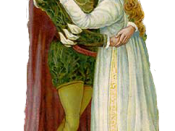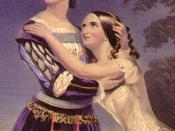The Red Curtain Trilogy, upon first thought, could simply be seen as a marketing tool by Baz Luhrmann and the team at Bazmark - put your three popular films in a box set with some added features and set it upon the DVD buying audience. However, upon further inspection, the three films are not boxed together simply for marketing purposes, or just by the fact they have the same director and production team - Simply Ballroom, William Shakespeares Romeo & Juliet and Moulin Rouge! all have underlying themes and myths that link them together. This essay will seek to discuss the social and aesthetic themes that run through the Red Curtain Trilogy. The themes will be compared and contrasted between the three films.
When explaining the 'trilogy', Lurhmann addresses the first theme that runs through them - it in fact relates not to any social or aesthetic theme, but the inspiration to elements of their storylines.
"The 'Red Curtain' style that defines our filmmaking comprises several
distinct storytelling choices. A simple, even naïve story based on a
primary myth is set in a heightened or created world that is at once
familiar yet exotic, distant. Each of the 'Red Curtain' trilogy has a device
which awakens the audience to the experience and the storyteller's presence,
encouraging them to be constantly aware that they are in fact watching a
film. In 'Strictly Ballroom' dance is the device, the actors literally dance out
the scenes. In 'Romeo+Juliet' it is Shakespeare's heightened 400-year-old
language. In 'Moulin Rouge', our ultimate 'Red Curtain' gesture, music and
song is the device that releases us from a naturalistic world."
(Baz Lurhmann - www.clubmoulinrouge.com)
The primary myths that Luhrmann alludes to are actually easy to understand once brought to light. In Strictly Ballroom, the myth is...


